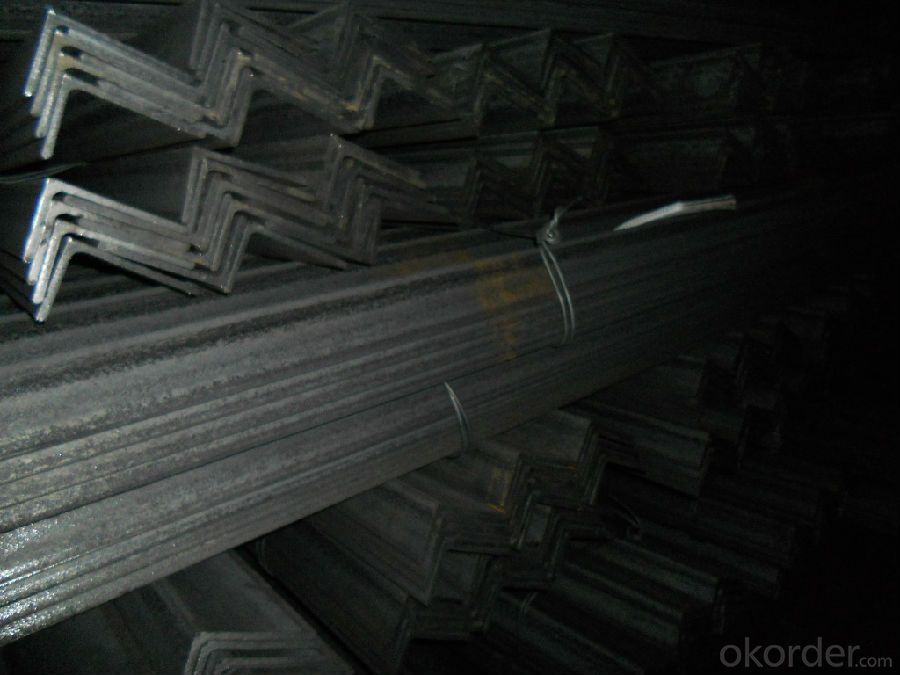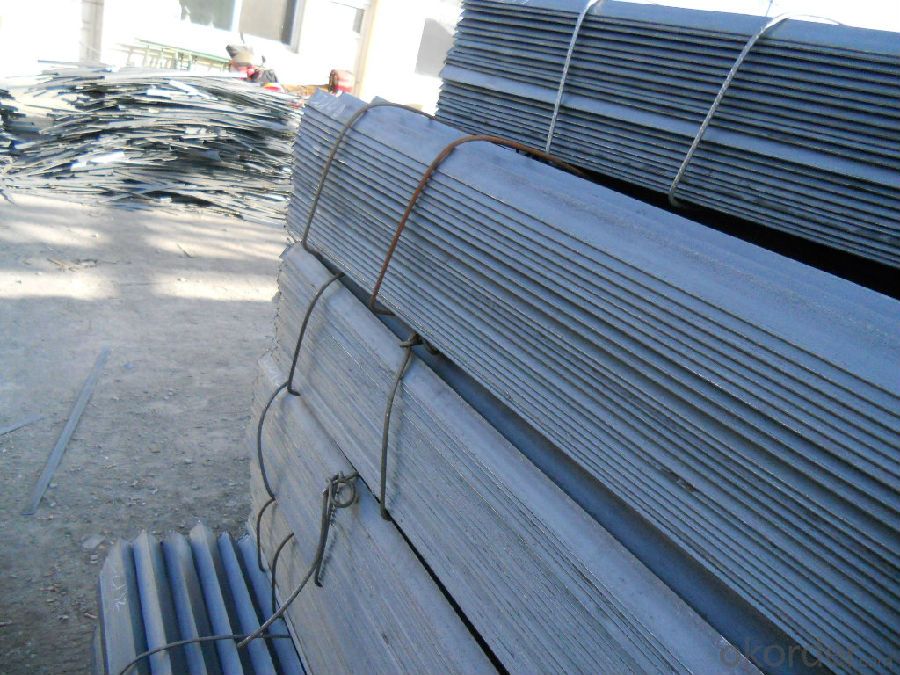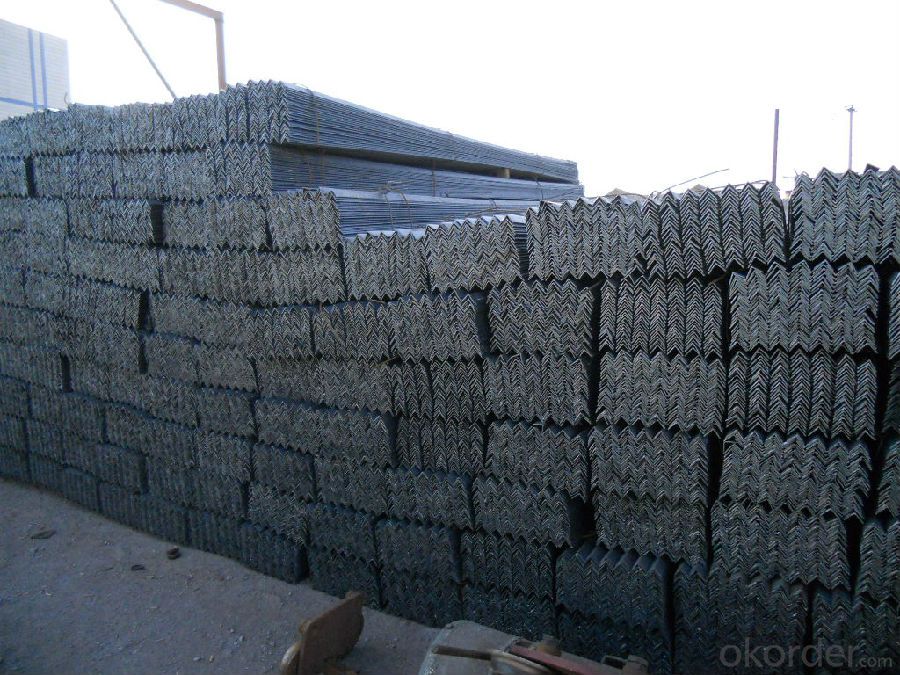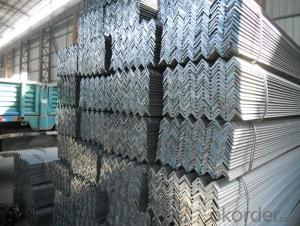HR Steel Angle Beams for Structures and for Buildings
- Loading Port:
- Guangzhou
- Payment Terms:
- TT OR LC
- Min Order Qty:
- 25 m.t.
- Supply Capability:
- 200000 m.t./month
OKorder Service Pledge
OKorder Financial Service
You Might Also Like
Product Description:
OKorder is offering HR Steel Angle Beams for Structures and for Buildings at great prices with worldwide shipping. Our supplier is a world-class manufacturer of steel, with our products utilized the world over. OKorder annually supplies products to European, North American and Asian markets. We provide quotations within 24 hours of receiving an inquiry and guarantee competitive prices.
Product Applications:
HR Steel Angle Beams for Structures and for Buildings are ideal for structural applications and are widely used in the construction of buildings and bridges, and the manufacturing, petrochemical, and transportation industries.
1. Supporting members, most commonly in the house raising industry to strengthen timber bears under houses. Transmission line towers, etc
2. Prefabricated structure
3. Medium scale bridges
4. It is widely used in various building structures and engineering structures such as roof beams, bridges, transmission towers, hoisting machinery and transport machinery, ships, industrial furnaces, reaction tower, container frame and warehouse etc.
Product Advantages:
HR Steel Angle Beams for Structures and for Buildings are durable, strong, and resist corrosion. And all the beams will be produced by steel billets of high quanlity in China with competitive prices.
Main Product Features:
· Premium quality
· Prompt delivery & seaworthy packing (30 days after receiving deposit)
· Corrosion resistance
· Can be recycled and reused
· Mill test certification
· Professional Service
· Competitive pricing
Product Specifications:
1. Invoicing on theoretical weight or actual weight as customer request
2. Length: 6m, 9m, 12m as following table
3. Sizes

Sizes: 25mm-250mm | ||
a*t | ||
25*2.5-4.0 | 70*6.0-9.0 | 130*9.0-15 |
30*2.5-6.6 | 75*6.0-9.0 | 140*10-14 |
36*3.0-5.0 | 80*5.0-10 | 150*10-20 |
38*2.3-6.0 | 90*7.0-10 | 160*10-16 |
40*3.0-5.0 | 100*6.0-12 | 175*12-15 |
45*4.0-6.0 | 110*8.0-10 | 180*12-18 |
50*4.0-6.0 | 120*6.0-15 | 200*14-25 |
60*4.0-8.0 | 125*8.0-14 | 250*25 |
5. Payment terms:
1).100% irrevocable L/C at sight.
2).30% T/T prepaid and the balance against the copy of B/L.
3).30% T/T prepaid and the balance against L/C
6.Material details:
Alloy No | Grade | Element (%) | |||||
C | Mn | S | P | Si | |||
Q235 | B | 0.12—0.20 | 0.3—0.7 | ≤0.045 | ≤0.045 | ≤0.3 | |
Alloy No | Grade | Yielding strength point( Mpa) | |||||
Thickness (mm) | |||||||
≤16 | >16--40 | >40--60 | >60--100 | ||||
≥ | |||||||
Q235 | B | 235 | 225 | 215 | 205 | ||
Alloy No | Grade | Tensile strength (Mpa) | Elongation after fracture (%) | ||||
Thickness (mm) | |||||||
≤16 | >16--40 | >40--60 | >60--100 | ||||
≥ | |||||||
Q235 | B | 375--500 | 26 | 25 | 24 | 23 | |
FAQ:
Q1: How do we guarantee the quality of our products?
A1: We have established an advanced quality management system which conducts strict quality tests at every step, from raw materials to the final product. At the same time, we provide extensive follow-up service assurances as required.
Q2: How soon can we receive the product after purchase?
A2: Within three days of placing an order, we will begin production. The specific shipping date is dependent upon international and government factors, but is typically 7 to 10 workdays.
Q4: Can HR Steel Angle Beams for Structures and for Buildings rust?
A4: Maybe there is some little rust on the suface of goods, but it dosen't afect the usage.



- Q:Can steel angles be used in the construction of religious institutions?
- Yes, steel angles can be used in the construction of religious institutions. Steel angles are versatile and commonly used in construction due to their strength, durability, and ability to withstand heavy loads. They can be used to provide structural support and stability to the building, ensuring its longevity and safety. Whether it is for columns, beams, trusses, or framing, steel angles can be effectively utilized in the construction of religious institutions to meet the specific design and engineering requirements.
- Q:What are the different grades of steel used in manufacturing steel angles?
- The different grades of steel used in manufacturing steel angles vary depending on the specific requirements and intended applications. Some common grades include A36, A572, and A588. A36 is a low carbon steel that is often used in general structural applications. A572 is a high-strength, low-alloy steel that is commonly used in construction and engineering projects. A588 is a weathering steel that is known for its corrosion resistance and is often used in outdoor structures.
- Q:Can steel angles be used as lintels?
- Yes, steel angles can be used as lintels. Lintels are structural elements that provide support over openings such as doors and windows, and steel angles are commonly used due to their strength and load-bearing capabilities. They can effectively distribute the load of the structure above the opening and ensure the stability and integrity of the building.
- Q:Are there any limitations or restrictions on the use of steel angles in certain applications?
- Yes, there are limitations and restrictions on the use of steel angles in certain applications. These restrictions mainly depend on the specific engineering requirements, load bearing capacity, and structural stability needed for the application. Additionally, factors such as the type of project, environmental conditions, and building codes and regulations may also impose limitations on the use of steel angles. It is important to consult with a structural engineer or an industry professional to ensure proper selection and usage of steel angles for specific applications.
- Q:How do steel angles perform in terms of impact resistance?
- Steel angles generally perform well in terms of impact resistance. Due to their structural design, steel angles are able to withstand high impact forces and distribute them evenly across their length. This makes them suitable for applications where impact or dynamic loads are expected, such as in construction, industrial machinery, or automotive frames. The high strength and toughness of steel also contribute to its excellent impact resistance. Steel angles are typically made from low carbon steel or alloy steel, which are known for their high tensile strength and ability to absorb energy without fracturing. This enables steel angles to resist deformation and maintain their structural integrity even under heavy impact. Furthermore, steel angles can be further improved in terms of impact resistance by using specific steel grades or by applying surface treatments such as galvanization or powder coating. These treatments can enhance the corrosion resistance and overall durability of steel angles, making them even more resistant to impact and other harsh environmental conditions. However, it is important to note that the specific impact resistance of steel angles can vary depending on factors such as the dimensions, thickness, and material properties of the angle. Therefore, it is recommended to consult with a structural engineer or refer to technical specifications provided by manufacturers to ensure that the steel angle chosen is suitable for the intended application and expected impact loads.
- Q:Can steel angles be used as handrails or guardrails?
- Handrails or guardrails can indeed be made using steel angles. The strength and durability of steel angles make them a popular choice in construction and industrial settings. When designed, fabricated, and installed correctly, steel angles offer a dependable support system for handrails and guardrails. By welding or bolting them to other structural components, a secure and safe railing system can be created. Moreover, steel angles are easily customizable to match specific design and aesthetic preferences. However, it is crucial to verify that the steel angles used adhere to the necessary safety standards and building codes, ensuring the safety and well-being of those utilizing the handrails or guardrails.
- Q:What are the common finishes available for steel angles?
- There are several common finishes available for steel angles, depending on the desired aesthetic appeal and level of protection required. Some of the most common finishes include: 1. Mill finish: This is the most basic and untreated finish, which is achieved by leaving the steel angle in its natural state after the manufacturing process. It has a rough, gray appearance and provides minimal corrosion resistance. 2. Hot-dip galvanized: This finish involves immersing the steel angle in a bath of molten zinc, which creates a protective coating on the surface. Hot-dip galvanizing provides excellent corrosion resistance and is commonly used in outdoor applications where the angle will be exposed to harsh environments. 3. Powder coating: This finish involves applying a dry powder to the steel angle, which is then heated and cured to create a durable and decorative coating. Powder coating provides a wide range of colors and textures and offers good corrosion resistance. 4. Painted finish: Steel angles can also be painted using various types of paint, including epoxy, enamel, or acrylic-based coatings. Painting provides a decorative finish and can also offer some degree of corrosion resistance, depending on the type and quality of the paint used. 5. Stainless steel: Steel angles made from stainless steel offer a distinct finish that is resistant to corrosion, staining, and rust. Stainless steel angles are often used in applications where hygiene, aesthetics, and longevity are important, such as in the food processing and medical industries. It's important to consider the specific requirements of your project, including the environment and intended use of the steel angle, when choosing the appropriate finish. Consulting with a steel supplier or expert can help you determine the best finish for your needs.
- Q:Can steel angles be used in outdoor applications?
- Yes, steel angles can be used in outdoor applications. Steel angles are commonly used in construction projects, including outdoor structures such as fences, gates, and outdoor staircases. They are also widely used in outdoor equipment and machinery, such as support brackets for solar panels or frames for outdoor signage. Steel angles are highly durable and resistant to corrosion, making them suitable for withstanding outdoor elements such as rain, wind, and sunlight. Additionally, steel angles can be galvanized or coated with protective finishes to further enhance their resistance to rust and other forms of corrosion. Overall, steel angles are a versatile and reliable choice for outdoor applications due to their strength, durability, and weather resistance.
- Q:What are the different types of steel coatings available for angles?
- Angles can be coated with various types of steel coatings, each with its own unique characteristics and benefits. Some commonly used coatings include: 1. Galvanized coating: This is a popular choice for steel angles as it involves applying a layer of zinc to the surface, providing excellent corrosion resistance. Galvanized angles are commonly used in outdoor settings or in places with high moisture levels. 2. Powder coating: This dry finishing process involves applying a fine powder to the steel angles, creating a smooth and durable finish. Powder coating is resistant to scratches, chipping, and fading, making it ideal for decorative or architectural applications. 3. Epoxy coating: These thermosetting polymer coatings offer exceptional resistance to chemicals, corrosion, and abrasion. They are commonly used in harsh industrial environments like chemical plants or wastewater treatment facilities. 4. Paint coating: Paint coatings are a cost-effective option for steel angles and can be customized in terms of color and finish. While they provide some level of corrosion protection, they may not be as durable as other coatings and are best suited for indoor or low-corrosion applications. 5. Organic coating: Organic coatings like polyurethane or polyester are used to provide both decorative and protective layers to steel angles. They offer excellent resistance to UV radiation, weathering, and fading, making them suitable for outdoor projects in the fields of architecture, construction, or infrastructure. When selecting a steel coating for angles, it's crucial to consider the specific requirements of your application. Environmental conditions, aesthetic preferences, and durability needs should all be taken into account to ensure the proper selection of the coating that best suits your project.
- Q:How do steel angles contribute to the overall safety of a building?
- Steel angles contribute to the overall safety of a building by providing structural support and reinforcement. They are commonly used in construction to connect and strengthen various structural components, such as beams, columns, and trusses. Steel angles help distribute loads and resist forces, such as wind, earthquakes, and heavy loads, thereby enhancing the building's stability and resistance to collapse. Additionally, they can prevent lateral movement and deformation, ensuring the structural integrity of the building.
1. Manufacturer Overview |
|
|---|---|
| Location | |
| Year Established | |
| Annual Output Value | |
| Main Markets | |
| Company Certifications | |
2. Manufacturer Certificates |
|
|---|---|
| a) Certification Name | |
| Range | |
| Reference | |
| Validity Period | |
3. Manufacturer Capability |
|
|---|---|
| a)Trade Capacity | |
| Nearest Port | |
| Export Percentage | |
| No.of Employees in Trade Department | |
| Language Spoken: | |
| b)Factory Information | |
| Factory Size: | |
| No. of Production Lines | |
| Contract Manufacturing | |
| Product Price Range | |
Send your message to us
HR Steel Angle Beams for Structures and for Buildings
- Loading Port:
- Guangzhou
- Payment Terms:
- TT OR LC
- Min Order Qty:
- 25 m.t.
- Supply Capability:
- 200000 m.t./month
OKorder Service Pledge
OKorder Financial Service
Similar products
New products
Hot products
Related keywords




























